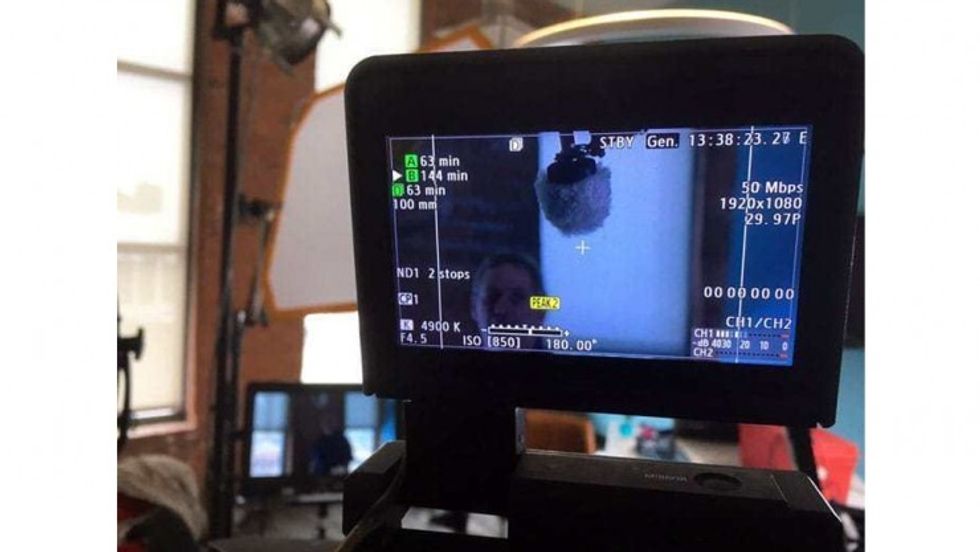The Difference Between Timecode and Genlock and Why You May Need Both On Set
Is timecode the most important thing to sync picture with sound? Let's explain why it may not be.

The common assumption is that by feeding timecode to a camera you will keep picture and sound in sync. Unfortunately, this is not the case.
Timecode and sync are not the same things. Timecode is in fact only metadata to identify how the first frame is labeled for time when the camera begins rolling. Once a camera starts recording, it ignores external timecode and uses its own internal clock to record. The problem you get here is the camera clock is not calibrated to the external sound recorder’s clock, and slowly they will drift apart as you continue to record. This is especially problematic for productions that require a long roll time (30 minutes plus), such as reality TV or event coverage. This can cause endless headaches in post when you match the audio and video with timecode, and by the end of the clip, the video is noticeably out of sync with the audio. The solution to this is Genlock.
What is Genlock?
Genlock (which is short for generator locking) originated in the early days of broadcast and video switching systems. Genlock was used to keep cameras and other video sources’ frames in sync to avoid nasty artifacts introduced when switching from one source to another.
Today, most switchers can compensate for this rather than feeding black burst to every source from a central clock. In the HD world, Genlock is still hanging around, but these days it uses a protocol called Tri-Level Sync to clock both the frame rate and line rate. This is especially important for 3D two camera rigs. Since Genlock clocks the capturing of frames on a camera, it can be used to keep the picture from drifting from the audio over time.

Keeping Your Set in Sync with Timecode, Genlock, and Word Clock
In order to keep every device in sync, you need to have everything clocked by one central master clock. The cameras need to be fed timecode and Genlock, and the audio recorder needs timecode and word clock.
As per the recommendation from Thom Shafer, I use Timecode Systems' :Wave Master Clock. This acts as a generator for word clock and Genlock and is slaved to the production sound recorders, something like a Sound Devices 664 that has timecode. Using the 664 and an additional 9 pin Lemo to USB data cable, I am able to control metadata, arm and disarm tracks, start and stop recording, and more on my recorder. The Timecode Systems UltraSync Ones get rejammed twice per second via 865 MHz to 923 MHz Worldwide ISM bands. Each camera gets an UltraSync One that outputs timecode and Genlock keeps the camera perfectly in sync with everything else on set. Ambient offers a similar solution with their Lockit boxes and ACN Network.
There are many commonly used cameras that can be Genlocked, with some requiring additional accessories to take Genlock and timecode. You'll find most of the higher-end cameras from ARRI, RED, Sony, Canon, Panasonic, and Blackmagic Design offering Genlock functionality which will save productions time in post.
But how do you approach timecode and Genlock? Let us know in the comments below.
Editor's Note: This story first appeared on Rapp's website and was edited for clarity.












